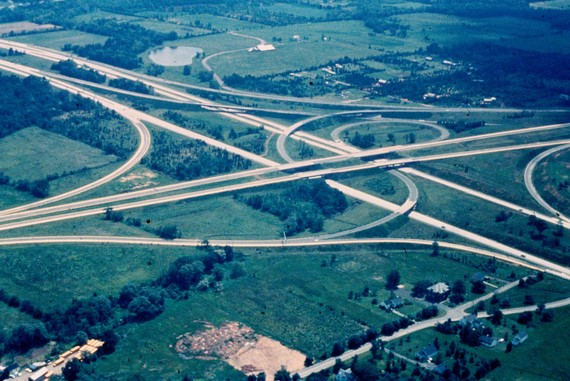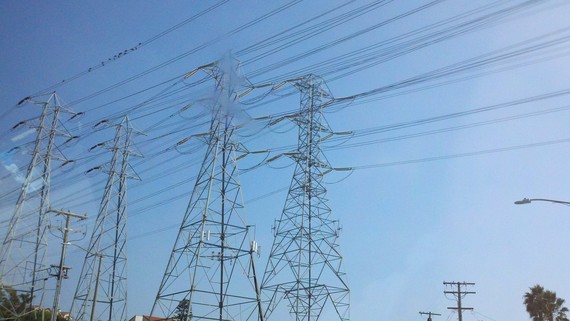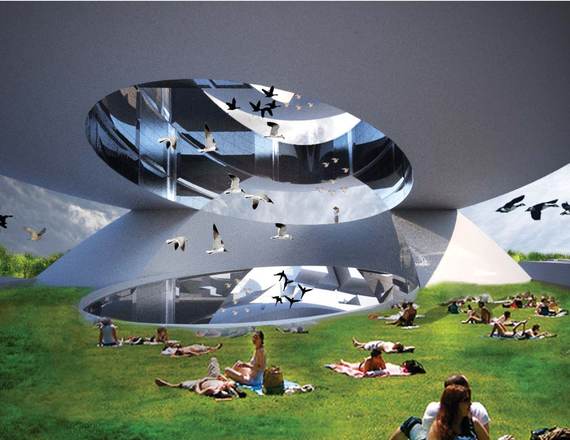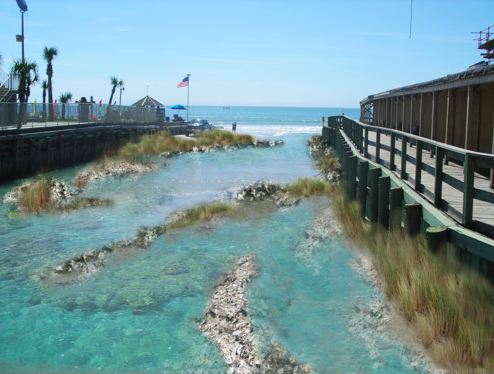Infrastructure is always talked about in hyperbole such as, "We must rebuild and upgrade America's infrastructure to restore the greatness of the nation," or "The marvel of 20th Century public works ushered the United States into an era of immense prosperity and progress." It is always talked about as a job creator, the underpinnings of economic success and how the U.S. is a global leader. Rarely do we look at how infrastructure is the root cause of most of our problems today.
Take cars for example. They get blamed for suburban sprawl, seas of parking lots and a culture of emissions. Without the extensive network of streets, bridges, tunnels and highways, we could not drive the amount we do. If we didn't drive as much as we do, we would not have produced all the carbon emissions we have. We wouldn't need petroleum. The Deepwater Horizon accident would have never happened and the Canadian tar sands would have little value. But to say cars are the cause of all the problems completely overlooks the role transportation infrastructure plays in allowing it to occur.
Another example is energy infrastructure. The massive debate about renewable energy versus fossil fuels centers around fuel types. There're some rumblings about the energy grid itself -- but always from the perspective that we need to upgrade it to a smart grid. However, easy accessible electricity as a standard home amenity is fairly new, in fact more recent than the industrial revolution. Perhaps the greatest expansion of gadgetry in the history of the human race, the electric grid didn't really exist until the mid-1900s. Since then, we have developed millions of devices, gizmos and buildings to run off electricity. Dams, wind farms and coal plants have been built to supply the grid, and in the process we have poured more carbon into the atmosphere than we know what to do with. You can blame inefficiencies within architecture. You can say that if our televisions or kitchen appliances were more efficient things would be better. That's a fair assessment, but without the electric grid we would have no ability to use the amount of fossil fuels we have.
Dreams of Our Fathers
The infrastructure of our fathers is the manifestation of a simplistic view -- one that believes we are destined to divide and conquer the wilderness. In many ways, the herald of Route 66 (which after all is just another piece of infrastructure) stretching across the country is the final chapter of our founding fathers' vision of a tamed western land. Wherever there are massive utility projects or heavy, grey infrastructure, you will find inescapable ecological problems. If you trace the sources of the raw materials that go into these massive efforts of infrastructure, you will find communities taken advantage of, water poisoned, air dirty and land contaminated.
Everyone knows the plight of West Virginia towns caked in toxins from years of mining. The same can be said for modern marvels of our society. The only difference is that the horrors of computers, solar panels and dams are hidden in places like China, Mexico and other developing countries.
Old Infrastructure is not the New Sexy
Old infrastructure is not sexy. We use it everyday in the form of roads, waterworks, energy grids and communication systems and barely notice. It's merely a means to an end. In our polarized political atmosphere, infrastructure is a battlefield where one side uses it as an instrument to justify job creation while the other stabs it as a line item to be cut from the national budget. We, as a public, are left asking rhetorical questions such as, "Which side is right, and what is it's most effective use?" But we never ask infrastructure to solve the problems it has created.
When we see the terrible damage from levees failing, what do we blame? It's never infrastructure. The truth is that levees are the best example of our old ideal for conquering the wild. Build a wall to hold back oceans, rivers and seas. Pump the rest of the water out of the area and call it dry land. Then we build cities, towns and neighborhoods in flood zones. The infrastructure gives us a false sense of security. When the walls begin to crack and homes are destroyed, we still don't blame the systems themselves. We blame nature, sea level rise, climate change and underfunding of infrastructure. We never look at the fact that our man-made dry land is, and has always been, underwater. The end game, when fighting the ocean, is defeat.
You know what's sexy? Nature is sexy. But listening to engineers, political figures and advocates, we can't focus on just how sexy it is. They are screaming at us that America's infrastructure is falling apart and if we don't fix it we will be marooned on the sands of missed opportunity. But in the face of bridges falling, rolling blackouts, levees breaking, dams flooding and energy grids failing, do we depend too much on this old world infrastructure? Can we evolved beyond the divide and conquer mentality of wilderness to embrace a new more right-sized reality?
America's Brand New Promise
Roadways are in disarray. Water systems are overstressed and communities face extraordinary risks from climate change. But do we really need all the highways and interstates we have? It's time to rethink infrastructure, not regressively but to embrace the fact we don't need so much of it. That is, at least, the more humble sentiment. The more honest truth is that we can't afford it. We built the majority of the infrastructure in the U.S. when materials and labor were cheap. That's no longer the reality. We are competing globally with other countries for resources and materials like steel and concrete that drive up prices. Labor, or more exactly, skilled labor, demands a livable wage. You must use skilled labor if you want the stuff built to work right, and that comes at a cost.
In a recent interview, I explored with my co-host and Byron Stigge a different option for infrastructure. One that is resilient but not overpowering. One that is nature-based but not inhumane. So often, advocates for infrastructure remain us that the U.S. was once number one in the world for infrastructure. Now we are ranked far down the list. We shouldn't rest our sense of self on the size of our biggest dam or largest skyscraper. We've been there, done that. Leadership isn't about doing the same thing over and over. It's about showing that a new path is available and achievable. If we want to stay relevant and show true leadership, it will not come by retaining the infrastructure of the 20th century. In our new and dynamic age, old approach is a losing battle. It's time to say goodbye to infrastructure as we know it. There's something much more exciting on the horizon.



